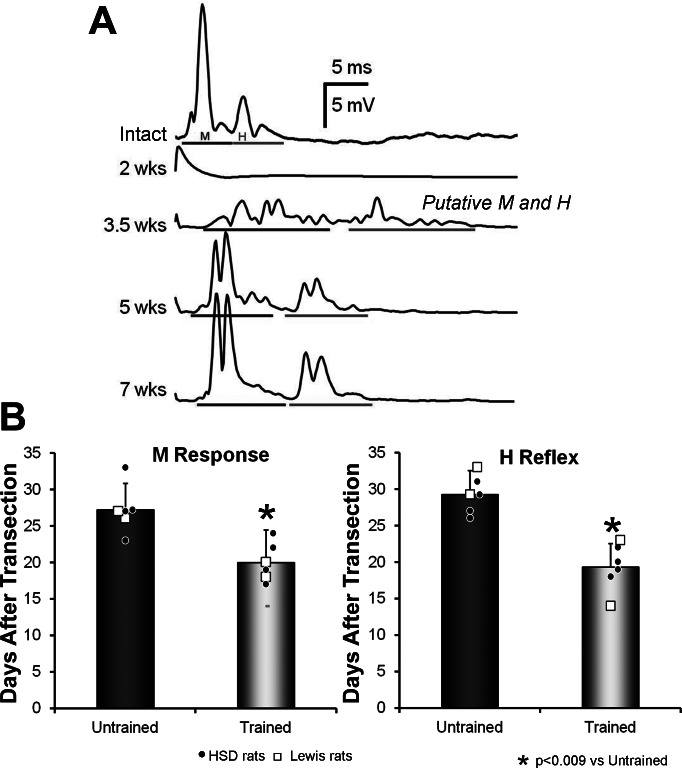Fig. 1.
Effects of exercise on restoration of evoked EMG responses. A: two evoked EMG potentials were found in the soleus (SOL) muscle in response to stimulation of the tibial (Tib) nerve: a direct muscle (M) response and, at a slightly longer latency, an H reflex. The different traces show these potentials recorded prior to (Intact) and at different times after transection and repair of the sciatic nerve. All were recorded from a single, Untrained rat, and each trace is an average of the responses to 100 stimulus presentations. Gray bars below each trace indicate the time windows chosen for the M responses and H reflexes at the different recovery times. Note that only a stimulus artifact, and no evoked responses, were found at the earliest postinjury time point (2 wk). At the time of earliest recording of restored activity (3.5 wk), multiple small potentials were recorded. Dividing them into M responses and H reflexes was somewhat arbitrary, so that these potentials are referred to as putative M responses and putative H reflexes. B: mean (±SD) values for the first day after nerve transection and repair that M responses (left) and H reflexes (right) could be evoked are shown for Untrained rats and rats that had been treadmill trained (TT) for 2 wk. Small symbols in each bar in these graphs represent the values obtained from individual rats. Different symbols are shown for Sprague-Dawley (HSD) and Lewis rats. *P < 0.009 vs. Untrained.

